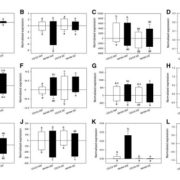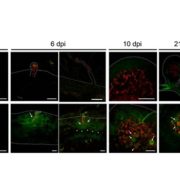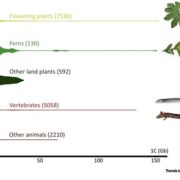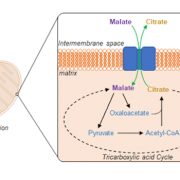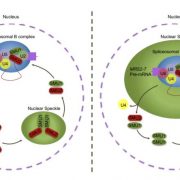Ancient duons may underpin spatial patterning of gene expression in C4 leaves
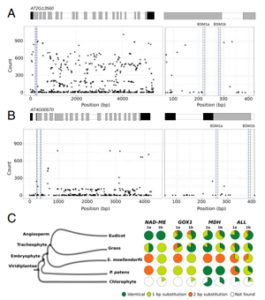 C4 photosynthesis describes a biochemical CO2-concentrating mechanism that relies on the spatial separation of biochemistry between two cell types, mesophyll cells (MCs) and bundle sheath cells (BSCs). However, there is currently little evidence on how some genes are preferentially expressed in BSCs over MCs. Reyna-Llorens et al. demonstrate that two cis regulatory motifs in the coding sequence of a BSC-expressed gene (NAD-dependent MALIC ENZYME1 from Gynandropsis gynandra, GgNAD-ME1) repress transcription of this gene in MCs. In order for repression to occur in MCs, both ‘duons’ must be present and separated by 240-550 nucleotides. Similar motifs were found in other genes preferentially expressed in BSCs, and are likely to represent recruitment sites for as-yet unidentified transcription factors. (Summary by Mike Page) Proc. Natl. Acad. Sci. USA 10.1073/pnas.1720576115
C4 photosynthesis describes a biochemical CO2-concentrating mechanism that relies on the spatial separation of biochemistry between two cell types, mesophyll cells (MCs) and bundle sheath cells (BSCs). However, there is currently little evidence on how some genes are preferentially expressed in BSCs over MCs. Reyna-Llorens et al. demonstrate that two cis regulatory motifs in the coding sequence of a BSC-expressed gene (NAD-dependent MALIC ENZYME1 from Gynandropsis gynandra, GgNAD-ME1) repress transcription of this gene in MCs. In order for repression to occur in MCs, both ‘duons’ must be present and separated by 240-550 nucleotides. Similar motifs were found in other genes preferentially expressed in BSCs, and are likely to represent recruitment sites for as-yet unidentified transcription factors. (Summary by Mike Page) Proc. Natl. Acad. Sci. USA 10.1073/pnas.1720576115


